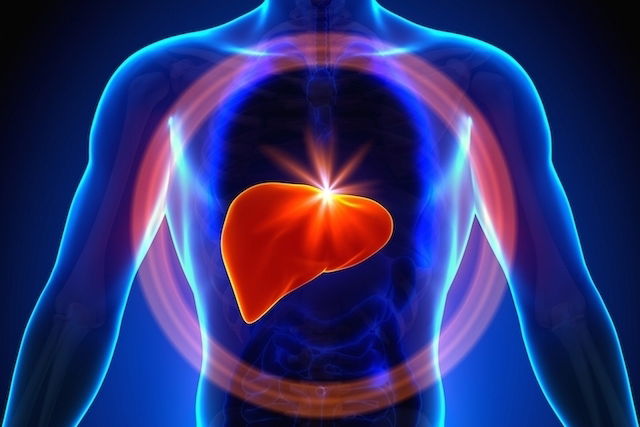A liver hemangioma is a small nodule formed by a cluster of blood vessels. This liver finding is normally benign, does not develop into cancer and does not cause symptoms. The causes of liver hemangiomas are not known, however, this problem is more common in women aged between 30 and 50, who have been pregnant or who are taking hormone replacement therapy.
Generally, a liver hemangioma is not serious and is usually picked up on abdominal ultrasounds or CT scans for other health conditions.
In most cases, a liver hemangioma does not require treatment, and resolve on its own without posing any harm to the patient's health. However, there are situations in which it can grow a lot or present a risk for bleeding, which can be dangerous. In these cases, a liver specialist may advise surgery.

Common symptoms
The most common symptoms of a liver hemangioma are:
- Pain or discomfort on the right side of the abdomen
- Nausea and vomiting
- Abdominal distension
- Feeling full after eating
- Loss of appetite
These symptoms are rare and normally only appear when the hemangioma is larger than 5 cm. If you experience these symptoms, you should see a liver specialist for further assessment.
Also recommended: 11 Symptoms of Liver Disease (With Online Symptom Quiz) tuasaude.com/en/liver-disease-symptomsThe liver specialist will order diagnostic tests to determine the need for treatment and to rule out the risk for liver cancer.
Confirming a diagnosis
A liver hemangioma is detected through abdominal imaging tests, such as an ultrasound, CT scan or MRI.
These tests are also useful to differentiate hemangioma from other types of liver lesions, such as malignant tumors or liver cysts.
Also recommended: Liver Inflammation: Symptoms, Causes, Diagnosis & Treatment tuasaude.com/en/liver-inflammationTreatment options
Treatment for a liver hemangioma should be guided by a liver specialist, but is normally only initiated if the patient presents with symptoms such as abdominal pain or constant vomiting. The doctor will opt to start treatment if there is a risk for the liver hemangioma to be a malignant tumor or when there is a risk for a rupture and bleeding of the vessels.
Normally, the most commonly used treatment for hemangioma in the liver is surgical removal of the nodule or the affected part of the liver. In more serious cases, radiation therapy or a liver transplant may also be necessary.
When the patient does not need treatment, the liver hemangioma should be monitored at least once a year.
Diet for liver hemangioma
There is no specific type of diet for a liver hemangioma, however, you can take some precautions with your diet to promote optimal liver health, such as:
- Avoid consuming foods that are high in fat, such as sausages, sauces, seasoning cubes, fried foods, fast food, butter, margarine, lasagna, nuggets and frozen pizza
- Avoid consuming foods high in sugar, such as cookies, cakes, soft drinks and pasteurized juices
- Include 3 to 5 servings of fruits and vegetables in your daily diet, as they are rich in fiber and antioxidants that promote liver health
- Increase your intake of high-fiber foods, such as whole grains, i.e. rice, pasta and whole grain bread
- Opt or fish and white meat, such as turkey and skinless chicken
- Avoid consuming alcohol
- Opt for skim dairy products, such as natural yogurt and low-fat white cheese
- Increase water intake and aim to drink 1 to 2.5 liters of water per day
- Reduce your salt intake, replacing it with the use of aromatic herbs to season food
Ideally, you should consult a registered dietitian to adapt your diet to your individual needs, especially if you have other health conditions. Read more about foods that are good for the liver that you can include in your diet.






























